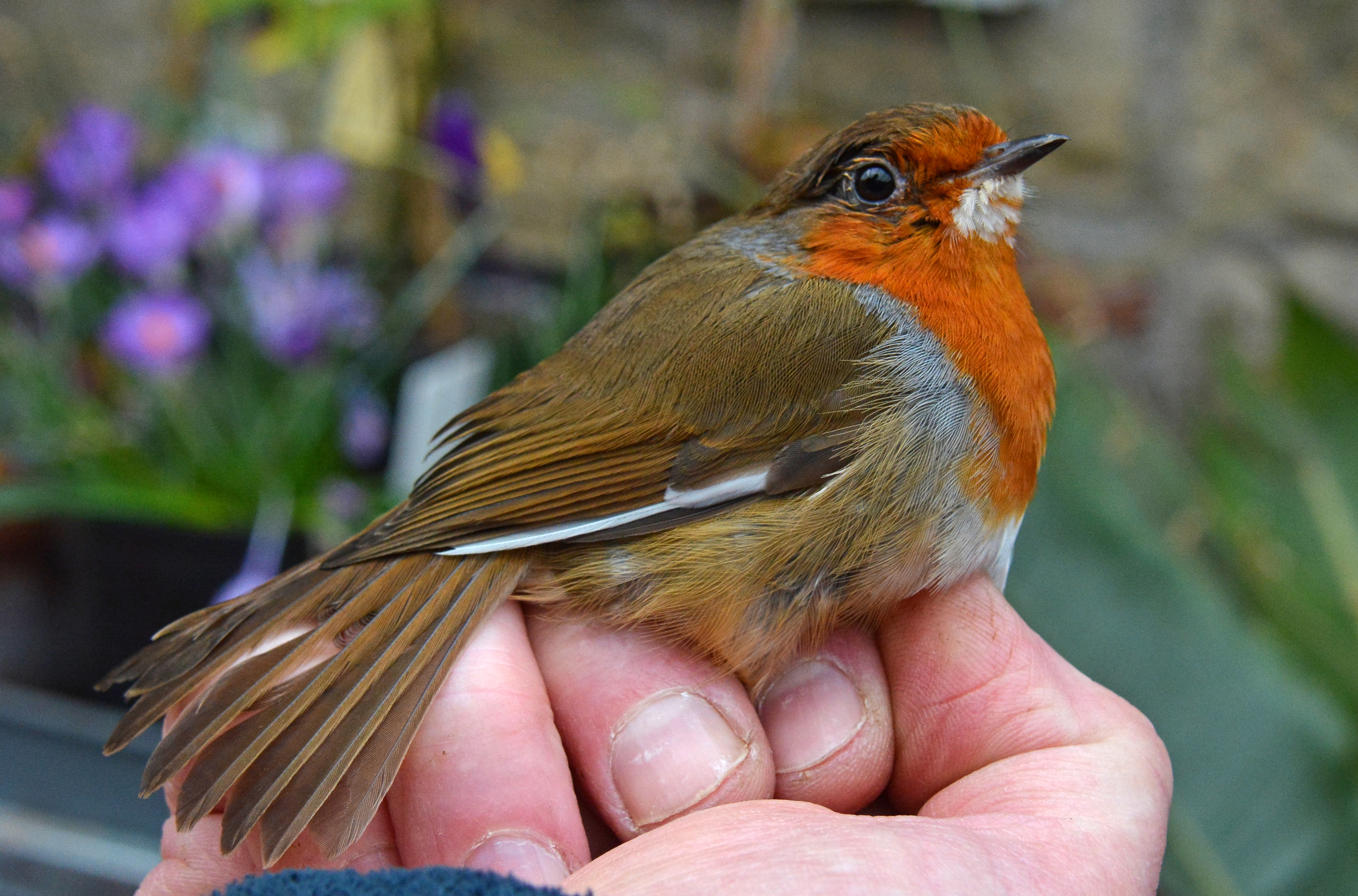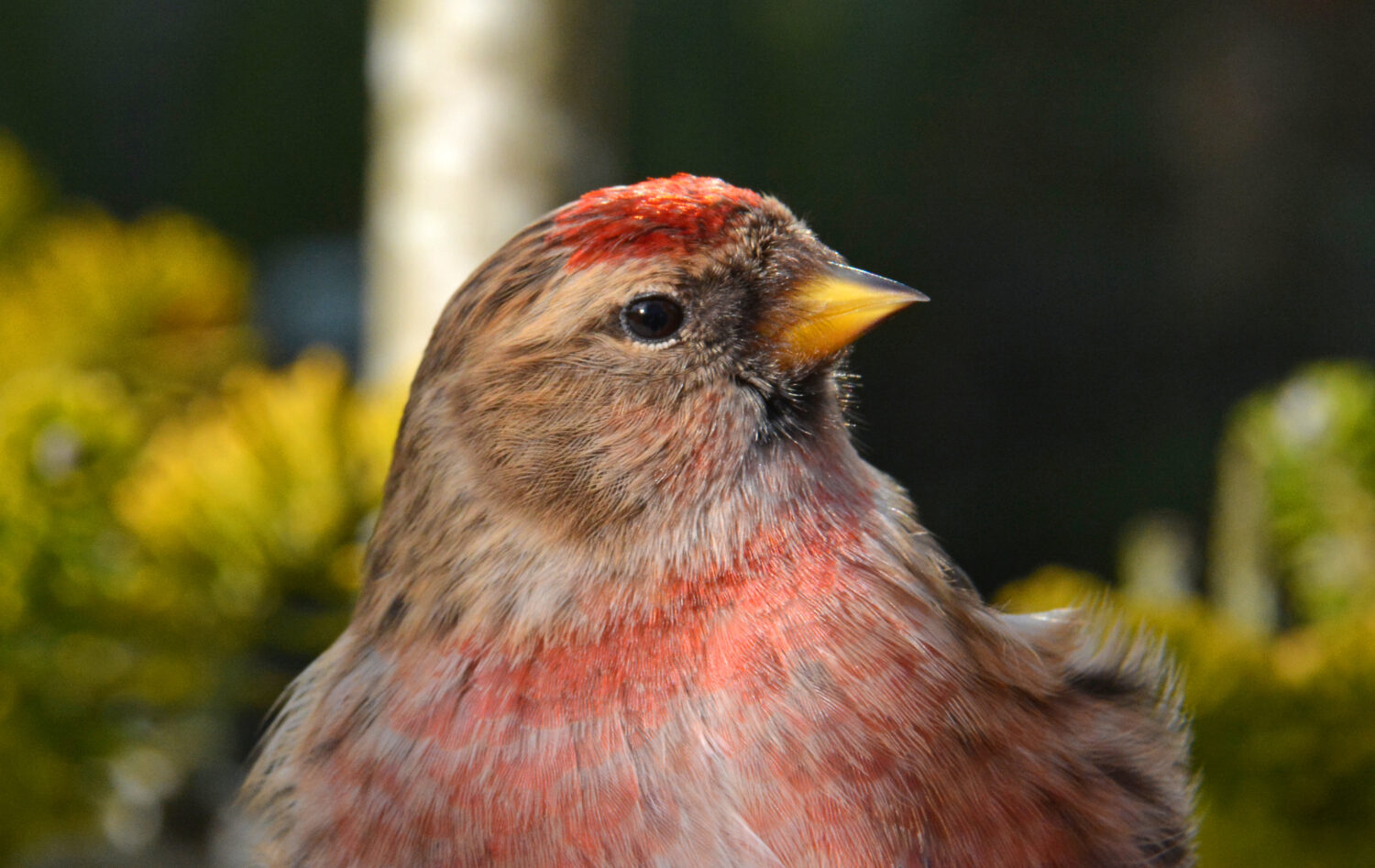Ornithologist, Phil Hanmer, shares a February update summarising bird monitoring across Northumberland throughout the month.
With the weather turning very troublesome we only just managed to conduct the last session of the British Trust for Ornithology (BTO) winter ringing initiative near Longhorsley on 22 February. However, we captured 17 new birds and 8 retraps; and the final bird caught was one of our target species – a new juvenile Willow Tit. After entering and submitting the data to the British Trust for Ornithology for their collation with all the other sites, and professional statistical analysis, I set about doing my own simplistic examination of the data and can report the following:
We operated nine sessions at the site from November to February catching 259 new birds of 18 species of which 116 were Blue Tits (46%). There were also 4 new Willow Tits, of which 3 were juveniles, and 3 new Marsh Tits, all juvenile; confirming that these two rare species had successfully bred locally to the site. Four of the 18 species were finches – Bullfinch, Goldfinch, Chaffinch & Siskin – but totalling only 15 individual birds in all; indicating how low their numbers are relative to the ‘tits’. It was apparent from the early sessions that the proportion of adult birds relative to juveniles was actually higher than we normally expect in winter (i.e. there were fewer juvenile birds around than is usual) and this was confirmed by the final figures which showed approimately 50% of the catch were adults. Clearly, something about the weather and/or food supply later in 2020 suppressed the population of juvenile birds. There were also 41 adult birds retrapped from previous winter ringing sessions. Again, heading the list was the Blue Tit (17) but they also included 1 Willow Tit from 2017-18; another from 2018-19; and two from 2019-20 but there were no adult Marsh Tits captured from earlier winter sessions.
At the extreme of the bad snow early in the month I noticed that we seemed to have rather more Blackbirds than was usual hunting around the garden for food; so, I set a Whoosh Net
In the garden. A Whoosh Net is perhaps best described as a ‘poor-mans cannon-net’; being powered by two long and strong rubber bungee cords – rather than explosives. Once triggered it fires a ‘square net’ up in the air which then quickly falls-down over a patch of grass. This catching-area having been earlier baited with birdseed. The result was that over just two days I captured 14 new Blackbirds and 3 re-traps. The re-traps were all my local birds – two from 2019 and a juvenile from 2020 – while most of the new birds showed dark smudgy-bills even though they were a mix of ages and sexes; indicating that they were probably of continental origin. The attached photo shows a detail of the local juvenile male blackbird wing with jet-black adult feathers near the body and much greyer juvenile feathers on the right-hand side of the wing; indicating that this is a juvenile bird hatched in 2020; which the ring number confirmed.
The wind prevented mist-netting over this period, but I baited the garden traps and captured an unusual ‘Leucistic’ Robin with white feathers under its throat, and in its right-wing – having three primary coverts and the second primary flight feather also white – see photo below. Also caught in a trap were some Redpoll; including a splendid retrapped male who had been originally ringed on the 13 April 2018; and recaptured again on 20 December 2019. Clearly, the garden is on its migration route to and from further north; probably somewhere in Scotland.


The bad weather, unfortunately, makes it very difficult for Barn Owls to hunt and hence there are always casualties in these conditions; because of ringing, we can identify the origins of some of these birds. One bird (GY14350) hatched at Lesbury in May 2020 was found dead at Alnmouth on the 3 February; another ringed near Fallodon (GV55814) in May 2017 was found dead 29 km away near Coupland on 17 February. Another hatched near Longhorsley (GY28016) in May 2020 was found dead near Brampton on the edge of Cumbria on the 18th having sought shelter in a Barn, having flown 65 km. The biggest traveller was a bird ringed at Whittingham on the 30 June 2019 (in its nest) GV97807; found dead 86 km away near Sedgefield, Co Durham on the 16 February. However, there was better news for a Barn Owl originally ringed in June 2020 near Netherwitton (GY20129) that was picked up injured by an observant Gritter Driver on the 29 January this year south of Haydon Bridge. He took it to a vet who treated it but then passed it onto a Wildlife Rescue Centre at Carrshield near Alston.
The ‘Howick Swans’ continue to entertain with the normal pair being missing for most of the month but three different birds turning up on Sunday 28. One was very young, still having some grey ‘cygnet’ feathers; the other two, although white-feathered, gave the impression of being young birds. Eventually one clearly showed a leg and we read the Red Darvik ring lettering of ZLJ; this showed the bird to have been hatched and subsequently ringed at Howick on 20 September 2019. How long these birds will stay around we don’t know; they did not give the impression of nesting this year.
We are continuing to undertake a limited amount of ringing under the provisions of the pandemic regulations that permit ‘voluntary or charitable services to continue’ these include Biodiversity Monitoring but its not sensible to take on any new trainees at present; hopefully things will change as 2021 progresses and we start ringing at Howick in July.